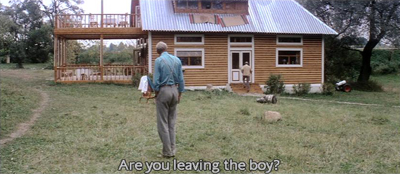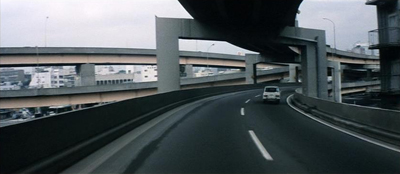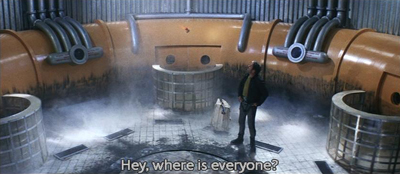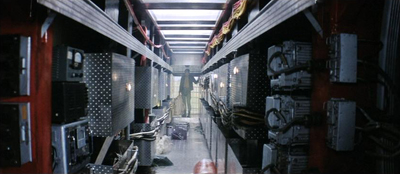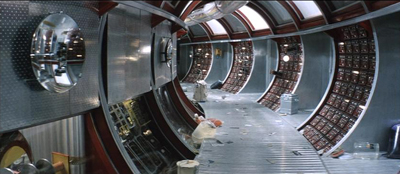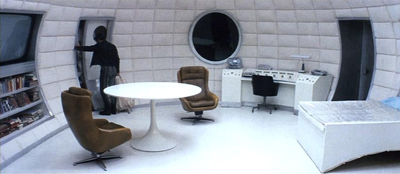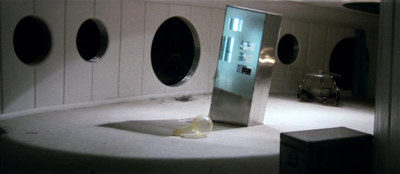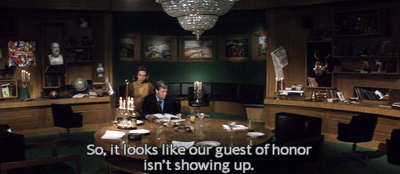



|
|
It is hard to place the Russian film Solaris due to the confusing overlap of futuristic sets, modern settings, metaphors, and low budget. The science-fiction elements of the story would make you suppose the story take place in the future (less than a hundred years), when interstellar flight is commonplace, at least for explorers and scientists, but the earth does not seem to have advanced much, except for very large televisions and video conferencing. The characters still drive mid-century automobiles (through retrofitted with video phones), and the infrastructures still looks decidedly mid-twentieth-century. Also rather confusing is the fact that the flashback scenes are in black-and-white, and the documentary films they watch of their younger selves are also in black-and-white, seeming to indicate that those scenes took place before the era of color television; but this can be understood as a metaphor. There is an attempt to explain some of the anachronisms, such as when Kelvin's father explains that his very unremarkable-looking house has been in the family for generations. The Solaris space station combines a very industrial design aesthetic of tubes and pipes with a very early sci-fi vision of walls full of buttons, flashing lights, and exposed computer circuits; though portions of the station such as Kelvin's living quarters and the observation deck have a very Modernist/Futurist look. Kelvin's quarters have spherical wall-ceilings, slick furniture and detailing, and curved bookshelves. There is one room in the space station that seems very un-spacey and reminiscent of a dining/living room on Earth, as though the astronauts and scientist need an architectural reminder of home. |




